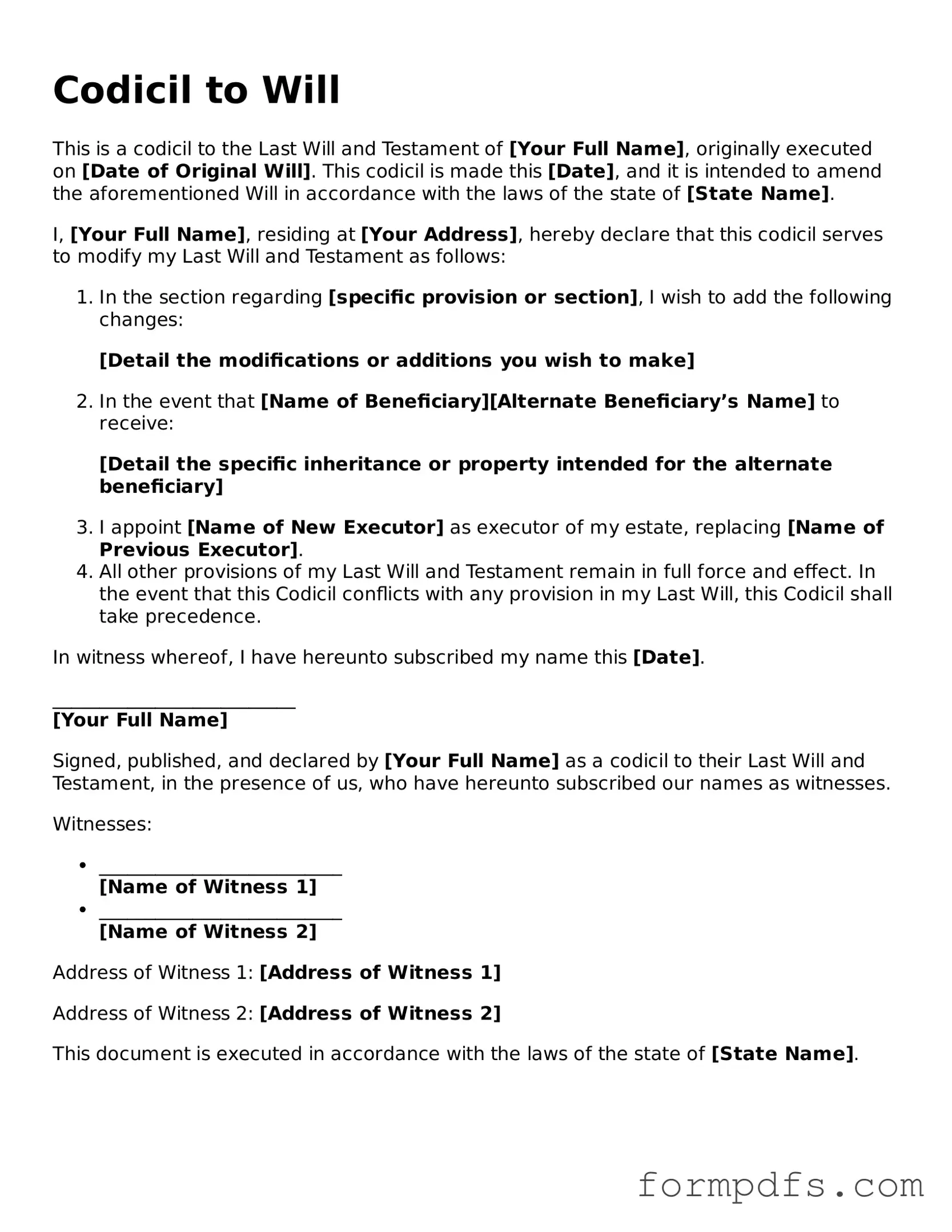What is a Codicil to a Will?
A codicil is a legal document that allows you to make changes to an existing will without having to create an entirely new one. It can be used to add new provisions, modify existing ones, or revoke certain parts of the original will. This is particularly useful if your circumstances change, such as getting married, having children, or acquiring new assets. A codicil must be signed and witnessed, just like a will, to ensure its validity.
How do I create a Codicil?
Creating a codicil involves a few straightforward steps. First, clearly state that the document is a codicil to your existing will. Next, outline the specific changes you want to make. Be as clear and detailed as possible to avoid confusion later. After drafting the codicil, sign it in the presence of witnesses, as required by your state’s laws. Finally, keep the codicil with your original will in a safe place. This ensures that anyone who reads your will will see the changes you’ve made.
Can I use a Codicil to change the entire Will?
No, a codicil is meant for making specific changes rather than replacing your entire will. If you find that your will requires significant revisions, it might be more appropriate to create a new will altogether. However, if you only need to update a few sections, a codicil can be an efficient solution. Just remember that the original will and any codicils must be kept together for clarity.
Is a Codicil legally binding?
Yes, a properly executed codicil is legally binding, just like a will. To ensure its validity, it must meet your state’s requirements, which typically include being signed by you and witnessed by at least two individuals who are not beneficiaries. If these conditions are met, your codicil will hold up in court and will be honored by the executor of your estate. Always consider consulting with a legal professional to confirm that your codicil is in compliance with local laws.
